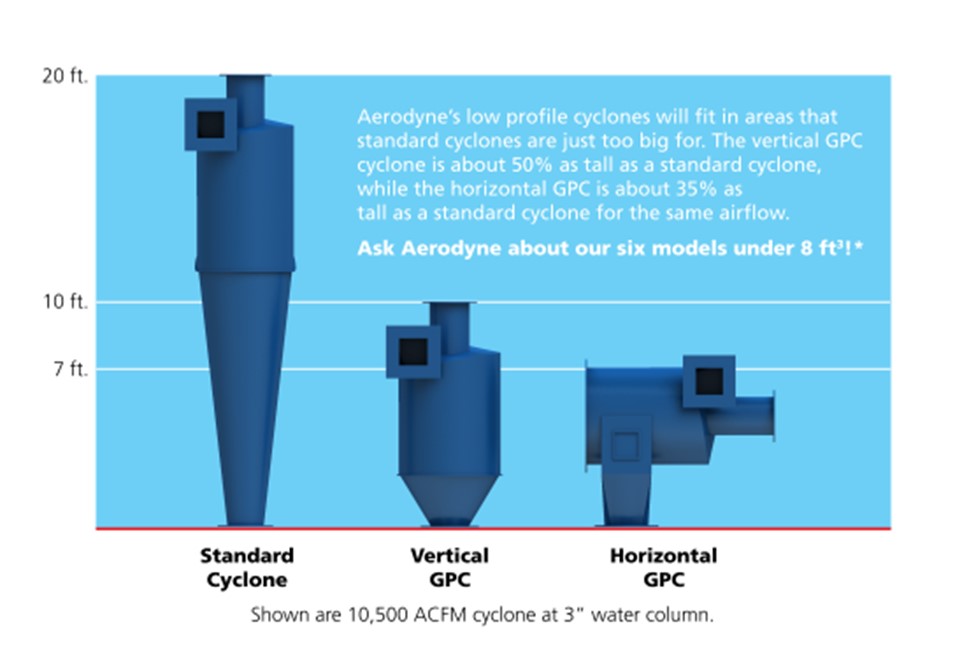When it is time to add a dust collector to your application, you have to find a place for the dust collector. This isn’t always easy. New facilities are usually designed around the equipment that is being installed. However when a system in an existing facility is modified or installed, you will have limited space to install the dust collector system. There are four factors that you should take into account when finding a place for your dust collector. (Part 2 of 4)
Space Constraints in New Facility
In new facilities, the installation of dust collectors is often pretty easy. Many times the building is designed around the equipment. This doesn’t mean that compact equipment isn’t beneficial. This can help lower ceilings, prevent the need for installation on the roof. When placing a dust collector in new facilities, it would best to place them as near to the system as you can while conforming to all the NFPA and other specs.
Space Constraints in Existing Facility
Existing facilities pose much more issues than new facilities. Often times existing facilities are constrained for space. They have added / expanded lines in a building that weren’t built for its current use. New regulations could require a new dust collector, larger dust collector, or modification to the dust collector (including explosion protection). All of this could require finding room for a new dust collector or moving the existing one.
Noises from Dust Collector and Fan
If the dust collector is not going to be mounted indoors, it needs to fit under the existing ceiling. Low profile units are often required. It might be easier to use low profile point of use dust collectors than to find a place to install a large dust collector for multiple processes. It is often beneficial to locate the dust collector as close to the processes it is collecting dust from. This lowers the cost of the system by minimizing ductwork which in turn minimizes the fan size and HP. When installing the dust collector you should remember to take into account noise from the dust collector and the fan. Fan silencers and noise blankets may be required if the equipment is too loud. And as discussed above, enough space should be available for installing all the explosion protection required.
Protect Dust Collection Equipment from Weather
If the dust collector is not going to be mounted indoors, height is usually not an issue. Some facilities do have outdoor height restrictions. Sometimes it’s the local city and sometimes it is to keep a low profile with the neighbors. The dust collection equipment must also be protected from the local weather. Equipment in the Midwest often requires freeze protection, while the Gulf Coast need to withstand high winds. When locating the dust collector outside you should install it as close as possible to the process, so as to minimize ductwork and power requirement.
Conform with NFPA
Many customers when installing equipment have to deal with local ordinances on the appearances of the outside of the facility. Other times, the company wants the facility to be aesthetically pleasing, and / or they want their neighbors to be comfortable with the appearances so as to minimize any issues in the future. And as mentioned before, the dust collector should conform with NFPA when installed on an explosive application.
To learn more about compact dust collector, please contact our experts at 440-543-7400 or visit our website: www.dustcollectorhq.com or click on the button below to get our whitepaper: 5 Ways to Save Costs by Using Small Dust-Collection Cyclones.


